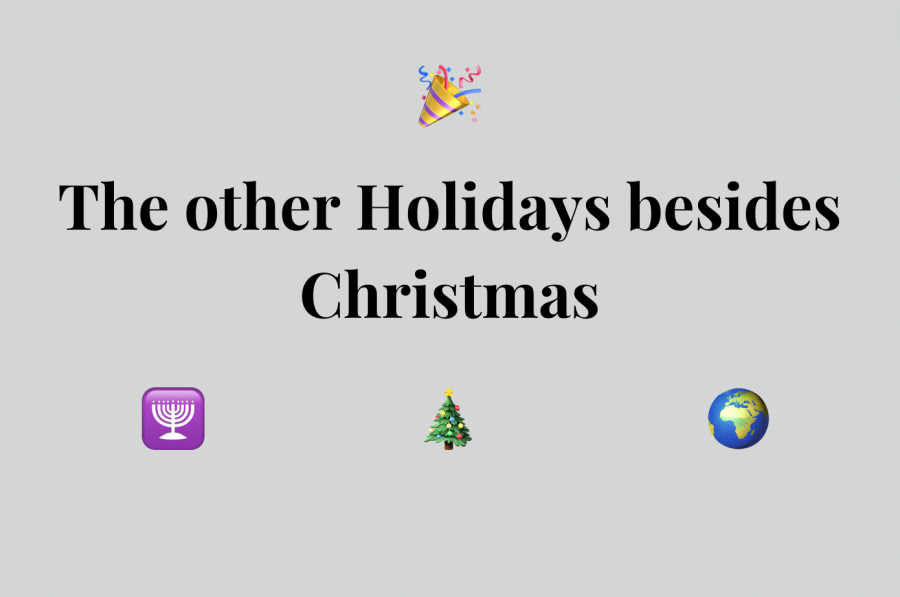The other Holidays besides Christmas
Considering the multitude of religions worldwide,America have a history of mainly respecting and responding to the Christmas holiday. The widespread holiday is celebrated by many Americans and other countries worldwide, but there are many other holidays, especially around December.
Here’s the history and a brief description of three main holidays other than Christmas that many people celebrate.
Hanukkah
Hanukkah is celebrated by the Jewish, Hanukkah (or Chanukah) is an eight-day celebration that typically takes place between late November and mid-December. According to History.com, it commemorates the Jews taking back a temple in Jerusalem, where they allegedly revolted against Greek-Syrian oppressors in the second century BC. Today, Jewish people celebrate through the kindling of the nine-branched menorah (muh-naw-ruh). After sundown on each night of the holiday, a new candle is added to the menorah, lit by a ninth candle called the shamash (“helper”). Many traditions surround the holiday and every celebration can be different, with each family or group choosing their own way of commemorating the holiday. Some may eat foods fried in oil, others play with the four-sided spinning tops,dreidels, and many exchange gifts.
Kwanzaa
Kwanzaa is an annual holiday celebrated primarily by African Americans, but is also celebrated in the Caribbean and other countries in which many people are of African descent. The word “Kwanzaa” is derived from the Swahili word “kwanza” meaning “first”, named by Maulana Karenga, who was an Africana studies professor at the California State University at Long Beach in 1966. According to Britannica, Professor Karenga created the entire celebration, meaning that it is the most prominent in the United States than other countries. The holiday was intended as a non-religious and non-political holiday, so it’s not meant to replace Christmas.
Kwanzaa is a 7-day long celebration, each day represents one of the seven principles: self-determination, creativity, faith, collective responsibility, unity, cooperative economics, and purpose. Additionally, each day has a corresponding symbol: vegetables, ears of corn, fruits, gifts, nuts, a straw mat, a candleholder, and a communal cup. There are also seven candles in the colors black, green, and red, typically known as the Pan-African flag colors. One of these candles is lit each day of the holiday.
Yule
Yule is a winter solstice celebration historically celebrated by Germans and Scandanavians. Over the centuries, it has been merged with Christmas; the two holidays’ names have become somewhat synonymous. Yule was traditionally celebrated with large feasts and big family gatherings. Now, one of the few traditions that remains well-known is the Yule Log, which used to be a large log that burned throughout the multi-day festival and kept the hearth warm. Now, the Yule log is a round cake decorated to look like a log, served on the solstice or Christmas.
Truckee High Stats on Holidays Other than Christmas
We took a poll during the 4th period to see how many students celebrate a holiday apart from or along with Christmas. According to our rough calculations, nearly 6.8% of the students at Truckee High 449 students who have a 4th period celebrate a holiday separate from or along with Christmas. In response to these calculations, it’s possible to conclude that more education on these different celebrations is needed, so that people can learn more about other people’s ethnic, religious, and cultural holidays.
Below are the stats from the poll taken during 4th period.
BENSLEY: 2/27
BURRILL: 1/12
MARTIN: 3/38
KUHN: 4/24
CARY: 0/20
BENNETT: 0/13
TORRES: 0/33
ROSENBLATT: 4/27
WORLEY:1/11
MOONEY: 1/18
WARREN: 0/24
JACOBS: 5/21
JAMISON: 1/23
FERTITTA: 0/10
MEGNIN: 0/7
HERRERA: 0/30
MAZZIE: 4/10
KRAMMEN: 1/9
ROWE: 2/26
SCUTT: 0/30
CUNNINGHAM: 1/23
(Not all 4th period classes were asked)
Sasha is a senior at Truckee high school and enjoying her first year of Journalism. Her favorite subjects to write about are sports and current events,...

